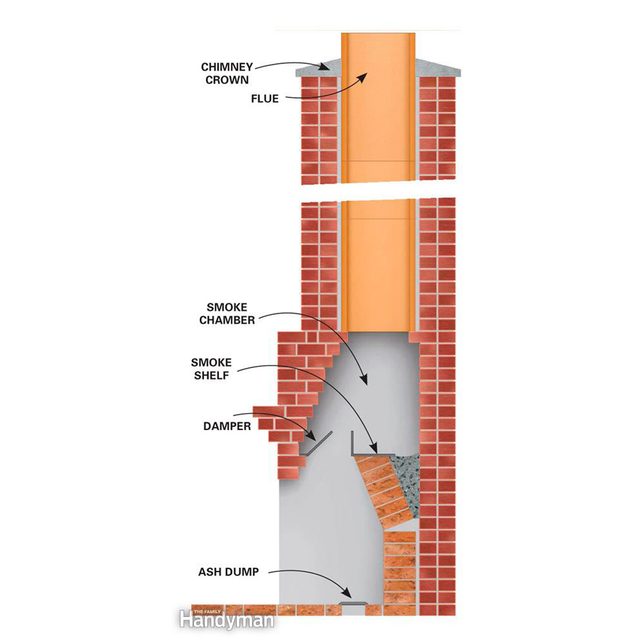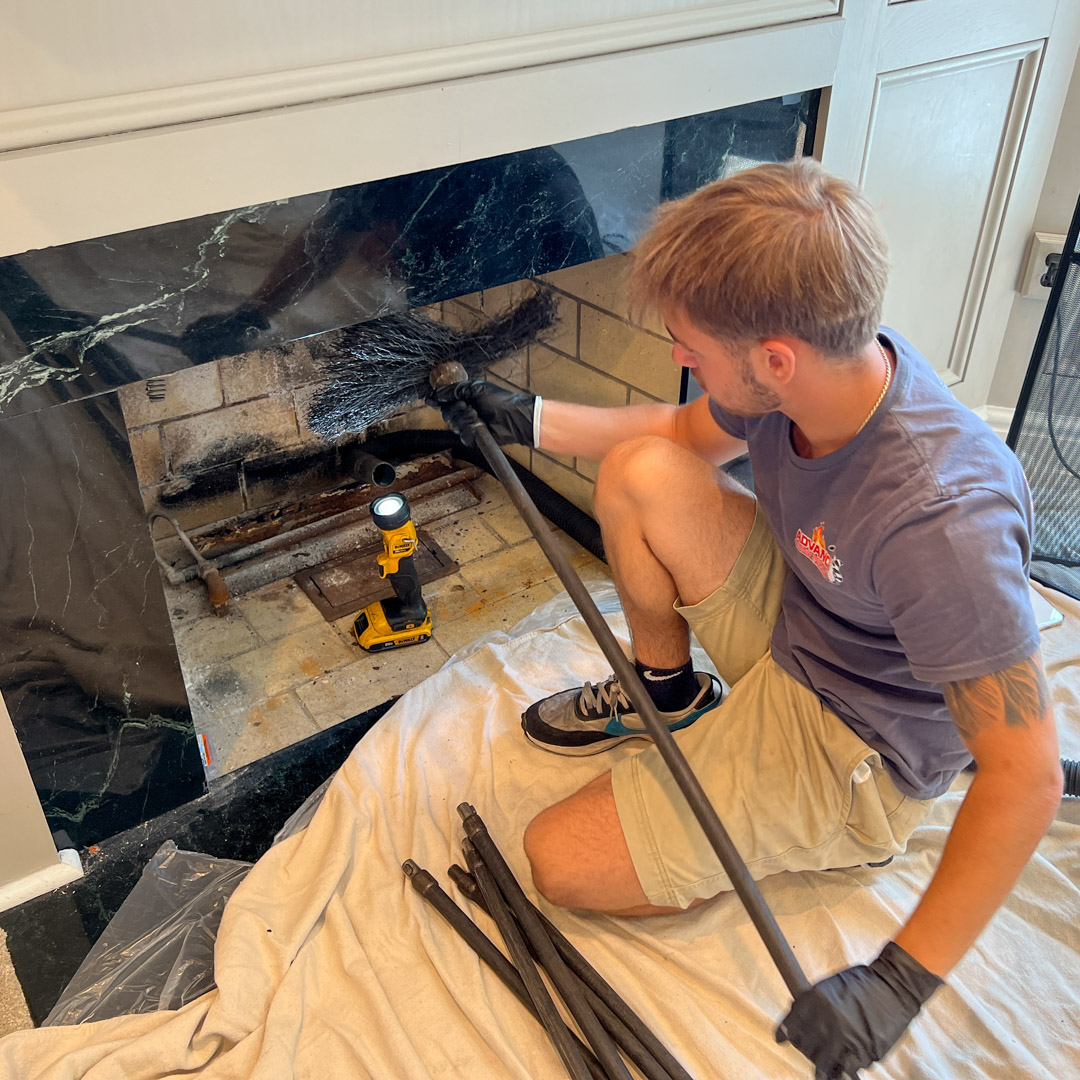Mastering the Art of Chimney Maintenance San Jose: Expert Advice and Strategies
Mastering the Art of Chimney Maintenance San Jose: Expert Advice and Strategies
Blog Article
Expert Tips for Effective Chimney Maintenance You Required to Know
Chimneys work as essential parts in many homes, giving warmth and comfort. However, guaranteeing their proper upkeep is typically ignored until issues develop. Recognizing the intricacies of chimney treatment can be the secret to stop costly repair work and guarding your home and household. From the relevance of normal inspections to secure operational practices, a comprehensive method to chimney upkeep is essential. Allow's check out specialist pointers that can assist you maintain your smokeshaft in optimal condition for several years to come.
Relevance of Routine Inspections
Regular inspections of smokeshafts are vital for guaranteeing their safety and capability. Chimneys play an essential function in venting out unsafe gases and preserving correct air movement in a home. Over time, creosote buildup, debris, and architectural damage can occur within the smokeshaft, posing significant threats such as smokeshaft fires or carbon monoxide leaks.
During a chimney assessment, educated experts evaluate the problem of the smokeshaft, seeking any kind of signs of damages, clogs, or degeneration. They additionally check the integrity of the flue, chimney lining, and smokeshaft cap to make certain every little thing remains in proper working order. By identifying and addressing issues early, possible dangers or expensive fixings can be avoided.
Routine assessments not just help in maintaining the security of the chimney but likewise add to its overall efficiency. A tidy and well-kept chimney operates better, making certain proper air flow and reducing the danger of interior air contamination. Organizing annual chimney evaluations is a positive action that property owners can take to shield their residential property and loved ones.
Cleaning Strategies and Regularity
Maintaining the safety and security and effectiveness of a chimney includes not only normal inspections but also implementing suitable cleansing methods and identifying the ideal regularity for cleaning. Smokeshafts must be cleaned by a specialist chimney sweep at the very least as soon as a year, even if they are not frequently used. If the chimney is made use of consistently, particularly with wood-burning ranges or fire places, it might call for more frequent cleanings to protect against the accumulation of creosote, an extremely flammable material that can lead to smokeshaft fires.
House owners must never ever forget chimney cleansing, as it is essential for preserving a functional and safe smokeshaft system. Routine cleansings not just decrease the danger of smokeshaft fires but also boost the smokeshaft's total efficiency and long life.
Attending To Smokeshaft Leaks

When attending to smokeshaft leaks, complete inspection and punctual repairs are essential to avoid water damage and maintain the structural stability of the smokeshaft. Leaks in a smokeshaft can bring about major concerns such as mold development, degeneration of the smokeshaft framework, and also possible fire dangers. To successfully address smokeshaft leakages, beginning by examining the chimney cap, crown, blinking, discover this info here and masonry for any signs of damage or wear. Chimney caps must be safely in position to stop water from getting in, while the crown and flashing need to be undamaged and correctly sealed. Any splits or voids in the stonework should be repaired immediately to prevent water infiltration. Furthermore, consider waterproofing the chimney to offer an additional layer of defense versus moisture. Normal maintenance and examinations can assist spot and deal with smokeshaft leaks early, conserving you from expensive repair work and making sure the security and long life of your smokeshaft.
Recognizing Creosote Build-Up
To understand the prospective threats of creosote build-up in chimneys, it is important to acknowledge its development procedure and influence on smokeshaft performance. Creosote is a black or brownish tar-like material that builds up inside smokeshaft systems when timber or fossil gas are melted. As smoke increases with the smokeshaft, it cools down and condenses, bring about the development of creosote, which sticks to the chimney great post to read wall surfaces.

Normal chimney examinations and cleansings by a specialist smokeshaft sweep are critical in stopping creosote build-up and making certain my site the risk-free operation of your chimney system.
Safe Procedure Practices
Carrying out proper safety methods is crucial for the efficient and protected operation of smokeshaft systems. When utilizing a fire place or wood-burning cooktop, it is essential to comply with certain security techniques to avoid potential risks. Always make certain that the chimney is skillfully inspected and cleansed routinely to eliminate any type of creosote buildup, which can lead to chimney fires. Furthermore, utilize a sturdy display or glass door in front of the fire place to avoid cinders or stimulates from leaving and creating a fire in your house. It is also crucial to never overload the fire place with extreme amounts of wood, as this can result in overheating and potential architectural damage.
Additionally, make sure to just shed seasoned wood in your fireplace, as green or wet wood can generate even more creosote and create dangerous chimney obstructions. Never ever leave a fire unattended and constantly make certain the fire is totally extinguished before going to bed or leaving the house. By complying with these risk-free operation methods, you can delight in a comfy and cozy fire while ensuring the safety and security of your home and enjoyed ones.
Final Thought
In conclusion, maintaining your chimney is essential for guaranteeing its safety and performance. Routine inspections, appropriate cleaning methods, addressing leakages, managing creosote accumulation, and following safe operation methods are key elements of chimney maintenance.
Over time, creosote build-up, debris, and architectural damages can happen within the smokeshaft, posing severe risks such as chimney fires or carbon monoxide leakages.
If the smokeshaft is utilized regularly, particularly with wood-burning cooktops or fireplaces, it may call for even more frequent cleanings to protect against the buildup of creosote, an extremely combustible material that can lead to chimney fires. (Chimney Maintenance San Jose)
To comprehend the possible threats of creosote build-up in chimneys, it is necessary to identify its formation process and effect on smokeshaft efficiency. As smoke climbs via the chimney, it cools and condenses, leading to the development of creosote, which adheres to the chimney wall surfaces.
Constantly make certain that the smokeshaft is professionally examined and cleaned up consistently to remove any creosote buildup, which can lead to chimney fires.
Report this page